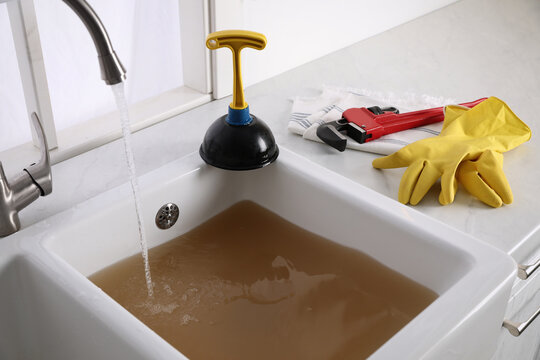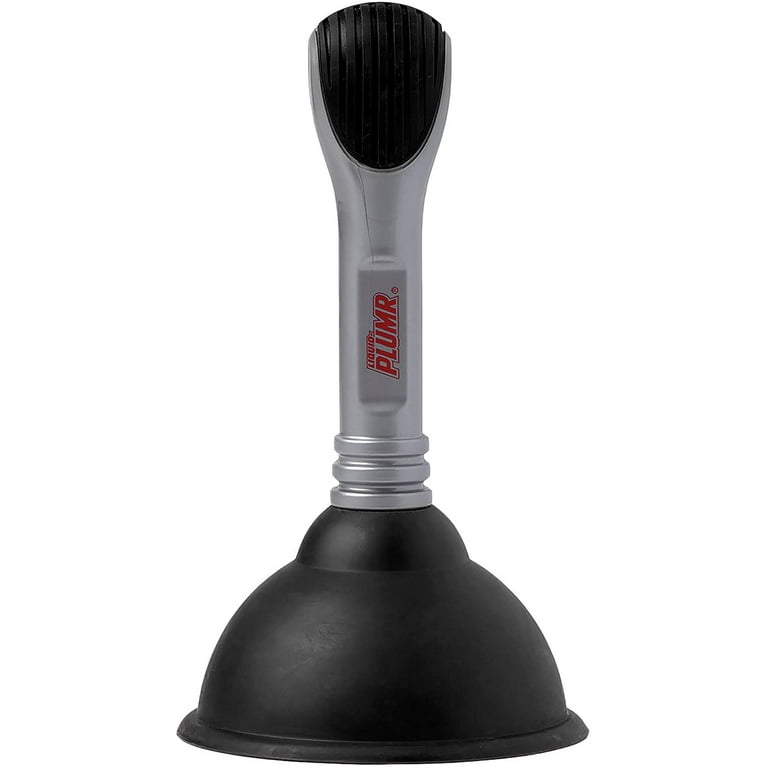Applying Plunger and Drain Cleaners: Professional Tips
Applying Plunger and Drain Cleaners: Professional Tips
Blog Article
What are your concepts about How to Use a Plunger to Unclog a Toilet or Drain?

Introduction
Proper maintenance of family drains pipes is important for stopping blockages and making sure smooth water circulation. One of the key tools in every home owner's toolkit is the bettor, together with numerous drain cleansers created to take on persistent blockages efficiently. This article checks out exactly how to utilize plungers and drainpipe cleaners effectively to maintain your drains moving freely.
Area 1: Understanding Plungers
Sorts of Plungers
There are several kinds of bettors available, each designed for different types of drains pipes and obstructs. One of the most common types consist of mug bettors, flange bettors, and accordion bettors.
Exactly How Plungers Work
Bettors deal with the principle of creating stress and suction to remove blockages. When correctly used over a drain, they develop a vacuum cleaner that can pull out debris or separate obstructions.
Selecting the Right Bettor
Choosing the appropriate bettor relies on the type of drain and the nature of the clog. Cup plungers are optimal for sinks and tubs, while flange plungers are much better fit for toilets as a result of their design.
Typical Blunders with Bettors
Staying clear of these errors makes certain reliable plunging: inappropriate seal around the drain, insufficient pressure, and not clearing surrounding debris.
Area 2: Utilizing Plungers Successfully
Prep work
Prior to plunging, make sure the plunger covers the drainpipe entirely and develops a limited seal. Clear any kind of visible particles around the drain opening.
Strategy
Begin with mild plunging movements to build suction. Increase stress gradually, using a stable rhythm. Repeat as essential till the drainpipe gets rid of.
Fixing Tips
If plunging does not work, attempt readjusting the seal, applying oil jelly for a far better seal, or using a different kind of plunger.
Section 3: Comprehending Drain Cleaning Company
Types of Drain Cleaning Company
Drain pipes cleansers can be chemical or chemical. Chemical cleansers make use of strong chemicals to liquify clogs, while enzymatic cleaners use all-natural enzymes to break down raw material.
Exactly How Drainpipe Cleaning Company Job
Chemical cleaners respond with clogs to dissolve them, while enzymatic cleansers break down organic materials like hair and grease without hurting pipes.
Safety Considerations
Always use handwear covers and eye protection when using chemical drain cleansers. Ensure ample air flow and follow manufacturer instructions meticulously.
Eco-Friendly Alternatives
Think about utilizing vinegar and cooking soda or enzyme-based cleaners for environment-friendly alternatives that are more secure for pipelines and the atmosphere.
Section 4: Making Use Of Drainpipe Cleansers Successfully
Application Methods
Pour chemical cleansers directly right into the drainpipe opening. Allow them to benefit the suggested time prior to purging with hot water. Chemical cleaners should rest overnight.
Safety measures
Prevent blending different sorts of cleansers, as this can produce harmful fumes. Never utilize chemical cleaners in conjunction with a plunger, as splashing can take place.
Dealing With Persistent Obstructions
For relentless blockages, think about using a plumbing serpent or calling a professional plumbing to prevent damages to pipelines.
Conclusion
To conclude, understanding exactly how to use plungers and drainpipe cleansers effectively is important for keeping healthy plumbing systems. By choosing the right tools and strategies, house owners can deal with small blockages and stop major pipes problems down the line.
4 DIY Ways to Unclog Drains
Wire Hanger
This age-old technique has been used by many an amateur plumber – to much success. Take any wire hanger, deconstruct its shape and leave a small hook shape on the end. Time to go fishing! Remove the shower or sink drain cover and snake the wire into the drain, wiggling and rotating it as you push it through. Dispose of the gunk that you remove and flush the drain with hot water. Rinse with a pan of boiling water for best results.
Plunger
Creating a suction in your drain can break up clogs caused by hair and soap residue build up. First, make sure you are using the correct type of plunger, one specifically for sinks or tubs. They are typically smaller than regular toilet plungers and often have a shallow suction cup. Regular plungers can work too but we’d recommend cleaning them first and finding a way to create better suction over the drain.
Baking Soda and Vinegar
This technique is a classic – and one of the most popular DIY drain unclog methods. Pour one cup of baking soda and one cup of vinegar down the drain and allow it to work its magic overnight. The next morning, flush the drain with boiling water. Repeat if necessary.
Drain Snake/Hair Clog Tool
If you know your clog is caused primary by hair, a drain snake/hair clog tool might be your best option. These tools can be purchased for under $10 at any hardware store and work well so long as the clog isn’t too deep in the drain.
https://www.callcatons.com/blog/four-diy-ways-to-unclog-drains/

Application Methods
Pour chemical cleansers directly right into the drainpipe opening. Allow them to benefit the suggested time prior to purging with hot water. Chemical cleaners should rest overnight.
Safety measures
Prevent blending different sorts of cleansers, as this can produce harmful fumes. Never utilize chemical cleaners in conjunction with a plunger, as splashing can take place.
Dealing With Persistent Obstructions
For relentless blockages, think about using a plumbing serpent or calling a professional plumbing to prevent damages to pipelines.
Conclusion
To conclude, understanding exactly how to use plungers and drainpipe cleansers effectively is important for keeping healthy plumbing systems. By choosing the right tools and strategies, house owners can deal with small blockages and stop major pipes problems down the line.
4 DIY Ways to Unclog Drains
Wire Hanger
This age-old technique has been used by many an amateur plumber – to much success. Take any wire hanger, deconstruct its shape and leave a small hook shape on the end. Time to go fishing! Remove the shower or sink drain cover and snake the wire into the drain, wiggling and rotating it as you push it through. Dispose of the gunk that you remove and flush the drain with hot water. Rinse with a pan of boiling water for best results.
Plunger
Creating a suction in your drain can break up clogs caused by hair and soap residue build up. First, make sure you are using the correct type of plunger, one specifically for sinks or tubs. They are typically smaller than regular toilet plungers and often have a shallow suction cup. Regular plungers can work too but we’d recommend cleaning them first and finding a way to create better suction over the drain.
Baking Soda and Vinegar
This technique is a classic – and one of the most popular DIY drain unclog methods. Pour one cup of baking soda and one cup of vinegar down the drain and allow it to work its magic overnight. The next morning, flush the drain with boiling water. Repeat if necessary.
Drain Snake/Hair Clog Tool
If you know your clog is caused primary by hair, a drain snake/hair clog tool might be your best option. These tools can be purchased for under $10 at any hardware store and work well so long as the clog isn’t too deep in the drain.
https://www.callcatons.com/blog/four-diy-ways-to-unclog-drains/

I am just very involved in How to Unclog Your Sink with a Plunger and I'm hoping you appreciated the new entry. Do you know somebody else who is fascinated with the topic? Please feel free to share it. Thank you for your time invested reading it.
Free Estimates Report this page